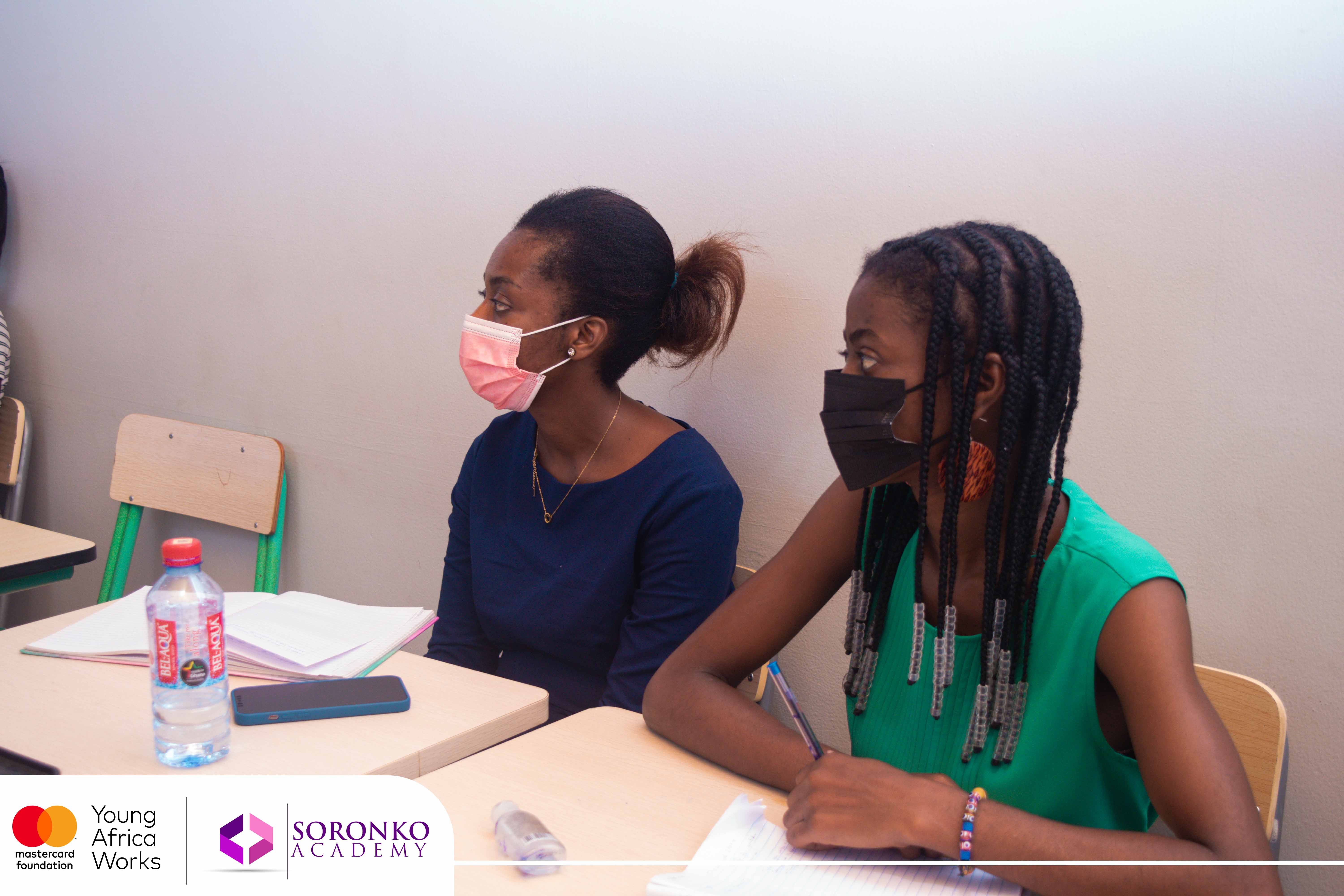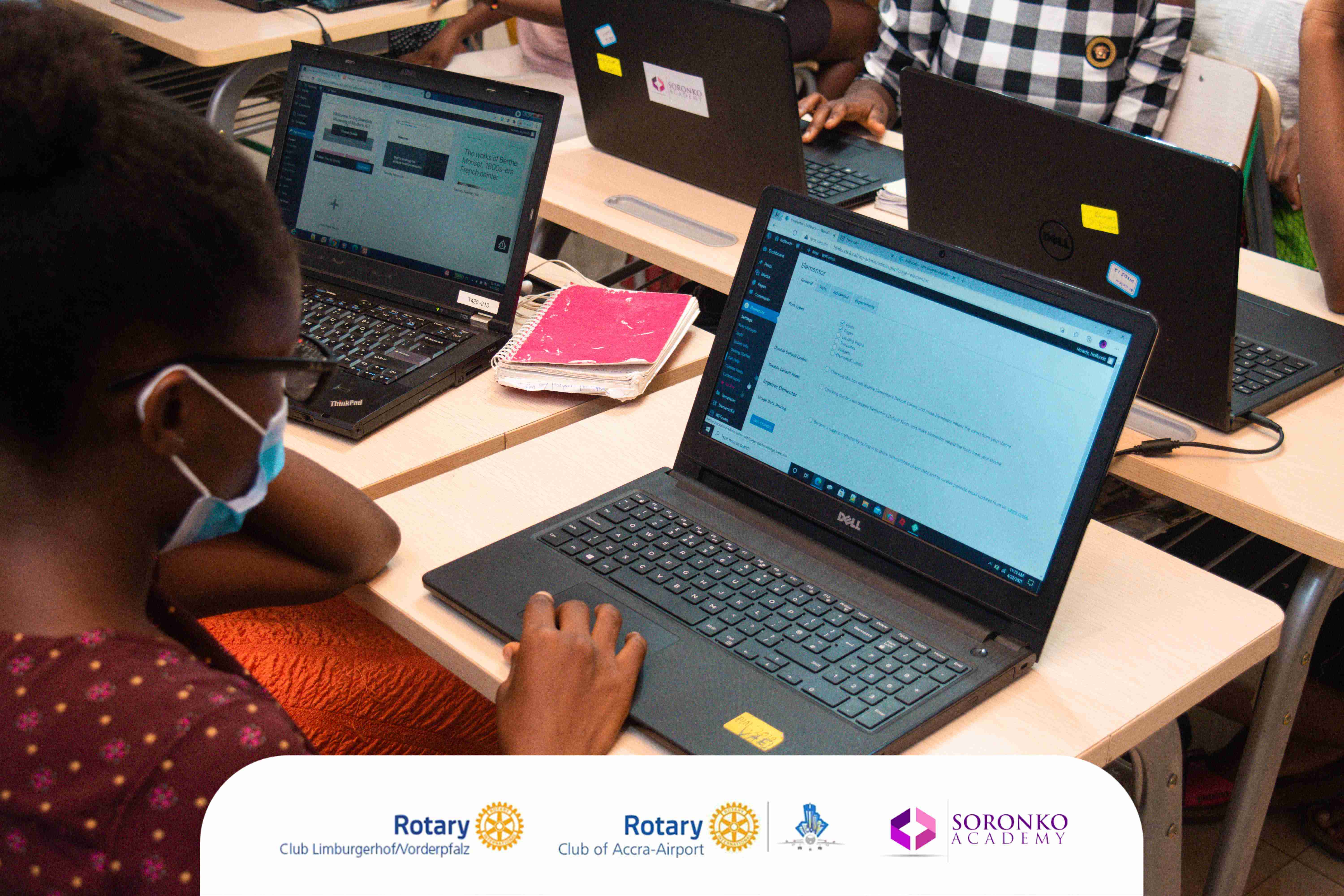After 3 exciting weeks of Digital Marketing, the 10th session of the 12th cohort of Women In digital skills started its web development journey.
On 19th April 2021, the class began with an introduction to web development using WordPress. WordPress is an open-source software you can use to create a beautiful website, blog, or app. The 3 major points of discussion were the people involved in web development, the process of web development and web designs or inspirations. Moses, their trainer went ahead to further break down these points and the role they played starting with the people involved in web development. The first is a front end developer; it’s his/her responsibility to ensure that website visitors can easily interact with the page. They do this through the combination of design, technology and programming to code a website’s appearance, as well as taking care of debugging. The second is a back-end developer; The back end of a website consists of a server, an application, and a database. A back-end developer builds and maintains the technology that powers those components which, together, enable the user-facing side of the website to even exist in the first place. The third was the processes involved in Web development.
Moses, their trainer also shared with the ladies the 3 major stages a website passes through before completion. These are Preparation, Development & Testing and Launching. Under the Preparation phase are Gathering information, Sitemap and Wireframing, Adding content, under Development phase are Creating APIs, Database management, Frontend development, and under Testing & Launching are Testing and debugging, Hosting & Maintenance. The ladies were also taken through how they could write a website using HTML & CSS and add Javascript functionalities and deploy their code to a server. They talked about database management and the various database management services that are available for the bits of information collected when creating a website. The terms User Interface and User Xperience Design were briefly explained well. To better understand what they were doing, the class reviewed some websites such as Firebase, Flutter and Amazon that had nice user interfaces which implemented good branding in their interfaces.
They went further to create user interfaces of websites using a local version of WordPress and set up their accounts on the platform. The ladies would continue to build their websites in the next class. The day’s session was very interactive and practical as the ladies were eager to learn.
The task for the second session of the fourth week was to install plugins. Plugins as explained by the trainer, are software add-ons that are installed on a program, enhancing its capabilities. For example, if you wanted to watch a video on a website, you may need a plugin to do so. If the plugin is not installed, your browser will not understand how to play the video. Elementor, a plugin was the first to be installed. Elementor allows WordPress users to create and edit websites by employing the drag and drop technique, with a built-in responsive mode.
The second was the starter template. This plugin is an add-on for the Starter Blog WordPress Theme. The demo content makes your website look like the preview of a theme so that you get a basic guideline for making your website. Once installed and activated, browse and import demo sites from your WordPress backend with 4 steps, Choose a site to import, Install recommended plugins, Import media and content, and Import config. Next was the Elements kit. Elements kit includes most comprehensive modules, such as Header Footer Builder, Mega Menu Builder Layoutkit etc. for building websites.
After successfully installing the mentioned plugins, the trainer showed the ladies how they could individually manipulate each element on the dashboard or using the tools panel where they added different elements such as text, images and styling to them. At the end of the class, most of the ladies had been able to implement most of the tools they had been taught. The rest of the ladies who were still yet to do so would be taken through the lesson again in the next class.
For the last session of the week, the trainer, Moses, began with a revision of the processes involved in the installations of plug-ins. Plug-ins as mentioned in the previous session were software add-ons that are installed on a program to enhance its capabilities. For example, if you wanted to watch a video on a website, you may need a plugin to do so. If the plugin is not installed, your browser will not understand how to play the video.
After installing the plug-ins, they went ahead to select a template from one of the plug-ins installed with which they were going to use to build their first projects. The ladies tweaked the chosen template and created a webpage for the 12th cohort of Women In Digital Skill(WIDS 12.0) where they displayed a brief overview of the topic covered in the training and some testimonial videos from the students themselves.
The final session of the week was very interesting and practical as the women were excited to finally understand the methods in building a basic website using WordPress.


